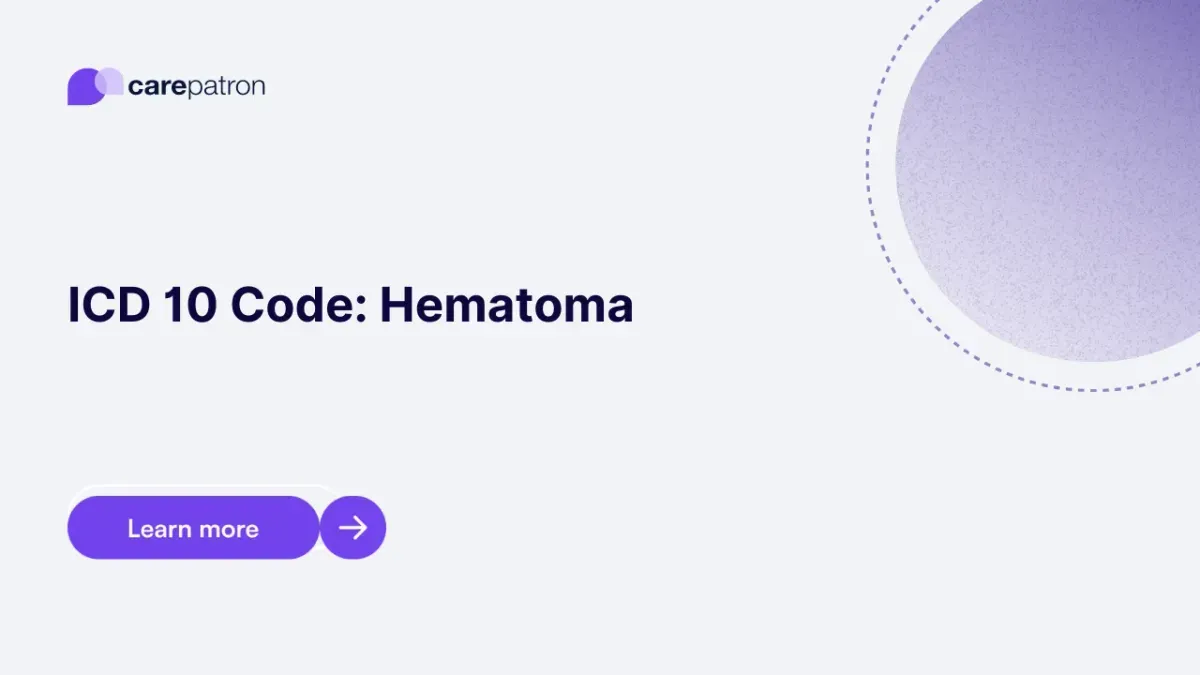
Hematoma ICD-10-CM Codes
Explore hematoma ICD-10-CM codes, including traumatic and nontraumatic types, diagnosis, treatment, complications, and billing guidance for providers.
Use Code
Commonly asked questions
A hematoma ICD-10 code should be used when a patient presents with a documented accumulation of blood outside of blood vessels, often due to trauma, surgery, or a medical condition. The code selected must reflect the hematoma’s location, cause (traumatic or nontraumatic), and encounter type (initial, subsequent, or sequela).
Yes, most hematoma ICD-10-CM codes, including M79.81 (Nontraumatic Hematoma of Soft Tissue), are valid and billable for insurance reimbursement. Accurate documentation of the hematoma’s characteristics ensures the correct code is used for billing and treatment purposes.
Treatment for hematomas depends on severity and location, ranging from rest, ice, and elevation to pain management and surgical drainage. In more complex or internal cases, especially involving the brain or post-surgical sites, medical intervention may include imaging, blood monitoring, or procedural correction.
EHR and practice management software
Get started for free
*No credit card required
Free
$0/usd
Unlimited clients
Telehealth
1GB of storage
Client portal text
Automated billing and online payments
